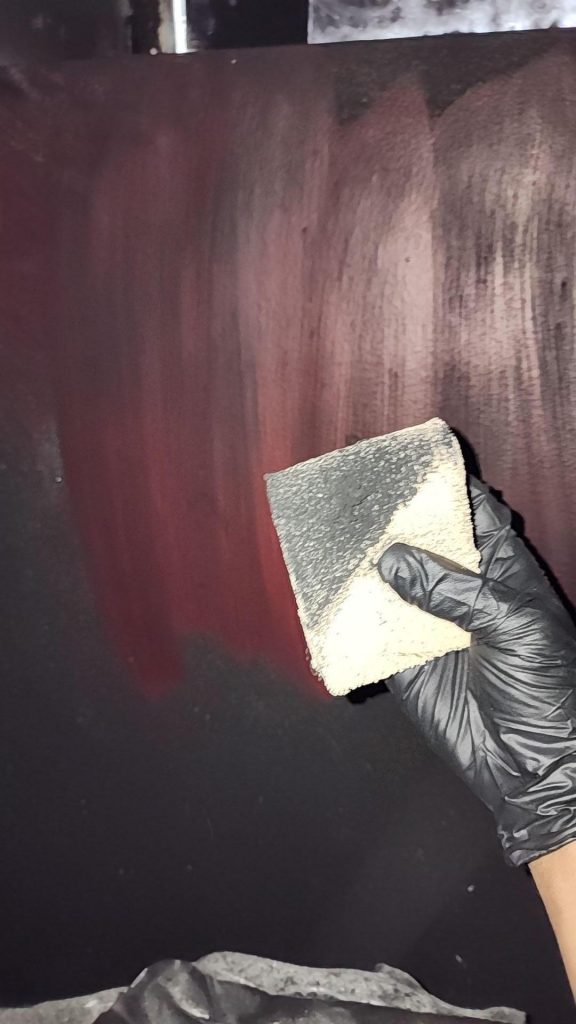When water extraction is needed: Have you ever dealt with a leaky pipe or a sudden flood in your home and thought a quick mop-up would fix it? You’re not alone. Many homeowners underestimate water damage, assuming surface cleaning is enough. But sometimes, you need more than a mop, you need professional water extraction to prevent long-term issues like mold or structural damage. In this article, we’ll break it down with clear answers to common questions, so you can spot the signs early.
To illustrate why this matters, let’s start with a real-life-inspired story about a homeowner named Alex. This tale highlights the pain of ignoring subtle signs, the escalating problems, and the key lesson learned.
A Homeowner’s Nightmare: Alex’s Flood Fiasco
Alex lived in a cozy two-story house in a suburban neighborhood. One rainy weekend, a burst pipe in the upstairs bathroom sent water cascading down to the living room below. At first, it seemed minor—just a puddle on the carpet and some drips on the walls. Alex grabbed a mop and towels, spending hours soaking up the visible water. “No big deal,” Alex thought. “I’ve handled spills before.”
But over the next few days, things got weird. The carpet felt squishy underfoot, even after drying with fans. A faint musty smell lingered in the air, like old gym socks. Alex dismissed it as humidity from the rain. Work was busy, so ignoring it seemed easier than calling a pro.
A week later, the pain points hit hard. Dark stains appeared on the ceiling downstairs, and the walls started bubbling like they were alive. Alex’s allergies flared up sneezing, headaches, and fatigue that wouldn’t quit. Then, black spots dotted the baseboards: mold. The family dog started scratching at the carpet, revealing soaked padding underneath that a mop couldn’t touch.
Panicking, Alex finally called a water damage expert. The inspection revealed water had seeped into the subfloor and insulation, creating a breeding ground for mold. The extraction team had to rip out sections of carpet and drywall, using industrial pumps and dehumidifiers. The bill? Over $5,000 way more than if addressed early. Plus, the family had to stay in a hotel for days while the home aired out.
The lesson? Water damage isn’t just about what’s on the surface. Mopping handles spills, but hidden moisture leads to health risks, costly repairs, and stress. Alex learned to act fast on signs like persistent dampness or odors, calling professionals before small issues become disasters. Now, Alex checks for leaks regularly and knows extraction saves time, money, and peace of mind.
This story isn’t unique, it’s a common scenario. Now, let’s dive into the specifics so you can avoid Alex’s mistakes.
What Are the First Signs of Water Damage in Your Home?

Water damage often starts subtly, but catching it early can save you headaches. The earliest indicators are usually visual or sensory changes that go beyond a simple spill.
One key sign is water stains. These show up as yellowish-brown marks on walls, ceilings, or floors. They might look like faint rings or splotches and often indicate leaks from pipes, roofs, or appliances. If you see these, it’s not just cosmetic, water could be pooling behind surfaces.
Another early clue is warped or buckling floors. Wooden floors might cup or crown, while laminate could peel at the edges. This happens when moisture swells the material, and mopping won’t reverse it if the water has penetrated deeply.
Paint or wallpaper issues are also telling. Bubbling, peeling, or cracking near the base of walls suggests water wicking up from the floor. In Alex’s case, this was a missed red flag.
Sounds can tip you off too. If you hear dripping behind walls or under floors when no faucets are on, that’s a sign of hidden leaks. And don’t ignore spikes in your water bill, they could mean undetected water loss needing more than a mop.
These signs point to excess moisture that requires extraction to fully remove, preventing escalation.
Water Extraction: Why Can’t You Just Mop Up Water Damage Yourself?
Mopping is great for small spills on hard surfaces, but it’s inadequate for serious water intrusion. Why? Because water doesn’t stay put, it seeps into porous materials like carpet, padding, drywall, and insulation.
When you mop, you’re only addressing surface water. But in carpets, water sinks to the underlay, creating a damp environment ideal for bacteria and mold. Professionals note that if materials aren’t dry within 48 hours, mold can start growing. Mopping might dry the top layer, but the bottom stays wet, leading to odors and health issues.
Walls and floors absorb water too. Drywall can hold moisture like a sponge, weakening structures over time. A mop can’t reach inside walls or under floors, where water causes rot or electrical hazards.
In short, mopping is a band-aid. Professional extraction uses tools to pull out deep water, ensuring thorough drying and reducing risks.
How Can You Tell If Water Has Seeped into Walls or Floors?

Hidden water is tricky, but there are ways to detect it without tearing things apart.
First, check for softness. Press on walls or floors, if they give under pressure or feel spongy, water has likely infiltrated. In floors, this might accompany visible warping.
Use your nose: A persistent damp or musty smell means moisture is trapped. This odor comes from mildew starting to form, even if invisible.
Look for discoloration. Dark spots on baseboards or lower walls indicate wicking. For ceilings, sagging or stains suggest water from above.
You can use a moisture meter (available at hardware stores) to test surfaces. Readings above 15-20% humidity often signal problems needing extraction.
If you suspect seepage, don’t wait—professionals use thermal imaging to confirm hidden water without invasive checks.
What Does a Musty Smell Mean for Your Home?
That earthy, musty odor isn’t just unpleasant, it’s a warning. It usually signals mold or mildew growth from trapped moisture.
Mold thrives in damp, dark places like behind walls or under carpets. If you smell it after a water event, even without visible signs, assume water lingers. In Alex’s story, this was the first pain point ignored.
Health-wise, musty smells can cause respiratory issues, allergies, or worse for sensitive people. Structurally, it means decay is underway.
Mopping won’t eliminate the source if it’s deep-seated. Extraction removes the water, and sanitizing kills spores.
When Is Visible Mold a Red Flag for Water Extraction?
Visible mold: black, green, or white spots, is a definite sign you need pros. It appears on walls, ceilings, or fabrics when moisture persists.
Mold grows fast, within 24-48 hours of wetting. If you see it, the water issue is advanced, and mopping alone risks spreading spores.
Small patches might seem DIY-able, but if larger than 10 square feet, call experts. They extract water, remove mold safely, and prevent regrowth.
Ignoring mold leads to health risks like asthma triggers and costly remediations.
What Are the Risks of Delaying Water Extraction?
Putting off extraction amplifies problems. Short-term: Persistent smells, stains, and discomfort.
Long-term: Structural damage—rotted wood, weakened foundations. Electrical shorts from wet wiring pose fire hazards.
Health impacts include mold-related illnesses. Financially, delays can turn a $1,000 fix into $10,000+ in repairs.
Like in Alex’s case, early action prevents escalation.
Professional Water Extraction Company in Fort Wayne: How Does Professional Water Extraction Work?

Professionals follow a systematic process to restore your home.
First, assessment: They inspect with moisture meters and thermal cameras to locate all water.
Then, water removal: Using submersible pumps for standing water and truck-mounted vacuums for carpets and floors.
Drying: Industrial fans, air movers, and dehumidifiers evaporate remaining moisture from materials.
Sanitizing: Antimicrobials kill bacteria and mold.
Finally, restoration: Repair or replace damaged items. This ensures complete dryness, unlike mopping.
Need Immediate Help with Water Extraction and Damage Restoration in Fort Wayne Indiana?
Call PuroClean Disaster Restoration of West Fort Wayne now at (260) 263-9788 for fast, reliable service.
With over 19 years of experience in water extraction and damage cleanup, drying, and property restoration, our certified team has helped countless Fort Wayne Indiana homeowners and businesses recover quickly and prevent long-term damage.
We’re proud to have earned 100+ five-star reviews on Google, a testament to our commitment to quality, safety, and customer satisfaction.
Read our verified customer reviews here and see why Fort Wayne Indiana trusts PuroClean for professional water extraction and cleanup.
Summary: Key Takeaways on Water Extraction Needs
- Early signs: Stains, warping, smells, mold.
- Mopping limits: Surface-only; misses hidden water.
- Risks: Health issues, structural damage, high costs.
- Pro process: Assess, extract, dry, sanitize.
- Lesson from story: Act fast to avoid pain.
This summary is concise for quick AI scans or voice reads.
FAQs: Quick Answers to Common Questions
What’s the difference between water removal and extraction?
Removal is basic pumping of standing water; extraction is thorough, including from materials like carpets.
How soon after water damage should I call for extraction?
Within 24-48 hours to prevent mold.
Can I do water extraction myself?
For minor spills, yes with a wet vac. But for seepage or large areas, pros have better tools.
What if I don’t see any signs but suspect damage?
Use a moisture meter or call for inspection—better safe than sorry.
How much does professional water extraction cost?
Varies by extent, but expect $500-$3,000 for average homes; check insurance.
Is water damage covered by homeowners insurance?
Often yes for sudden events like bursts, but not gradual leaks—review your policy.


 PuroClean Disaster Restoration of West Fort Wayne
PuroClean Disaster Restoration of West Fort Wayne